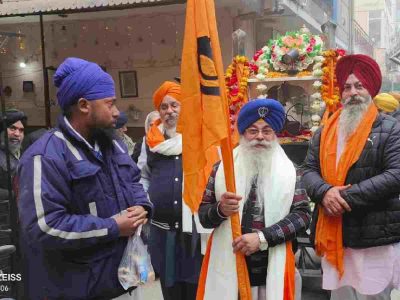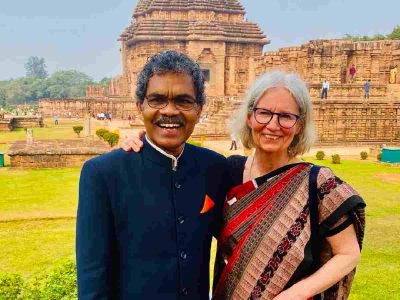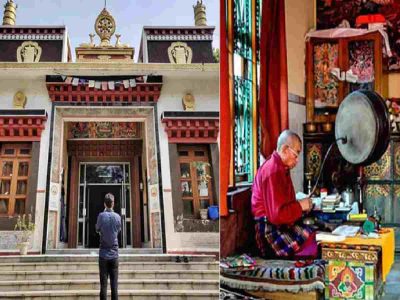Delhi, once the pulsating heart of street theatre or Nukkad Natak, is witnessing the slow fading of this once-vibrant art form. Rooted in activism and social consciousness, Nukkad Natak thrived on the streets, engaging the masses in markets and public spaces with pressing issues like gender equality, caste discrimination, and environmental crises.
Today, however, this grassroots performance art has retreated into college campuses and indoor auditoriums, leaving the city’s streets eerily silent.
What led to this cultural shift? A mix of waning public interest, financial constraints, bureaucratic roadblocks, and political co-option has significantly undermined this iconic medium.
Journey from streets to stages
Traditionally, Nukkad Natak was a rallying cry for social change, delivering hard-hitting messages through relatable, energetic performances. Yet, the vibrant street corners of Delhi are now bereft of these dramatic spectacles.
Colleges like Ramjas and Hansraj have emerged as the final strongholds of this tradition, but even there, the art form feels confined.
“It’s disheartening to see Nukkad Natak losing its significance in Delhi’s cultural landscape,” says Rizwan Chaudhary, a member of Ramjas College’s Dramatic Society. “Once, these performances were common in markets and neighbourhoods. Now, they are mostly limited to college competitions.”
Chaudhary laments how the meaning of Nukkad Natak has shifted. “What once stood for activism and public engagement is now reduced to a formality for contests. It is a disgrace to the art.”
A professor from Hansraj College, wishing not to be named, echoes similar sentiments. “While Nukkad Natak continues, it has lost its originality. College groups are often hired by political parties to showcase agendas, diluting its activist spirit,” he explained.
Even occasional performances, like the one by students of Rau’s IAS Academy in August 2024, addressing the deaths of three aspirants its Rajinder Nagar branch, fail to capture the regularity and impact that Nukkad Natak once had.
Challenges that confront the artistes
The decline of street theatre is rooted in its lack of financial sustainability. Artistes often work out of passion, but without funding or sponsorship, their dedication becomes harder to sustain.
“Many of us simply can’t afford to dedicate time to street theatre,” said Tahir Najar, an independent artiste. “There’s no steady income, and institutional support is nearly non-existent.”
Another hurdle is the increasing difficulty of securing permissions for public performances. Parveen Aarya, head of Awaaz-The Nukkad Natak Group, shares, “Getting permits for public performances in Delhi has become a nightmare. By the time approvals come through, the momentum and relevance of the performance are often lost.”
Om Singh Chauhan, founder of Maadhyam NGO, which works to promote street theatre in Delhi, believes that the lack of promotion for this art form has significantly impacted its growth. “This has often resulted in a lack of opportunities for artistes. The authorities need to take steps to promote this field,” he said.
Adoption by politics and institutions
Another factor contributing to the decline is the increasing use of Nukkad Natak as a tool by political parties and authorities to propagate their agendas. While street theatre has always been a medium for raising awareness, its co-option by institutions has diluted its activist spirit.
“Nukkad Natak was once a voice of dissent, but now it is often used to promote government schemes or political ideologies. This shift has alienated independent artistes and NGOs who want to address real social issues,” a founder of a Delhi-based NGO explained, requesting anonymity.
“We have redirected our focus to other parts of the state for conducting Nukkad Nataks due to challenges in obtaining permissions in Delhi,” the NGO stated.
Even organisations like Sahitya Kala Parishad, which introduced a fellowship programme in 2019 to promote street performances, have failed to sustain their initiatives. “The fellowship programme hasn’t resumed, and the momentum to revive Nukkad Natak is missing,” notes a cultural department official.
The fellowship programme was introduced by the Art, Culture & Languages Department, Govt of NCT of Delhi under the leadership of Deputy Chief Minister Manish Sisodia, announcing street performance fellowships for 1,000 young talents promoting Nukkad Natak culture.
An official of the National School of Drama (NSD) said, “Nukkad Natak is now mostly performed upon request.”
A glimmer of hope
Despite these challenges, efforts to breathe life back into Nukkad Natak persist. Independent artistes and some NGOs are advocating for relaxed regulations, financial support, and accessible public spaces to revive the art form.
“There is always hope,” says Anuj, an independent street artiste. “With collective effort, Nukkad Natak can return to its roots—engaging the masses and addressing social issues with boldness.”
Anuj suggests greater involvement from cultural and tourism ministries. “Why limit Nukkad Natak to Republic Day or Independence Day? Why not make it a regular cultural affair?”
While the battle to restore Delhi’s Nukkad Natak culture is uphill, the passion of its few remaining practitioners keeps the flame alive. With the right support, the city streets may once again echo with the resounding voices of this powerful art form.
The background
The origins of street plays can be traced back to ancient India, where storytelling and dramatic performances were an integral part of the cultural and religious fabric. Traditional forms of street theatre, such as the Jatra in Bengal, Tamasha in Maharashtra, and Terukkuttu in Tamil Nadu, were prevalent in different regions of the country.
Also Read: Over 400 street artists availed of Delhi govt fellowship
During the British colonial period in India, street plays emerged as a powerful tool for social and political dissent. After India gained independence in 1947, street plays continued to flourish as a form of popular entertainment and social commentary.
Renowned playwrights like Safdar Hashmi made significant contributions to this art form. Hashmi, a political activist and theatre artiste, used Nukkad Natak to highlight pressing social issues and bring them to public consciousness.





